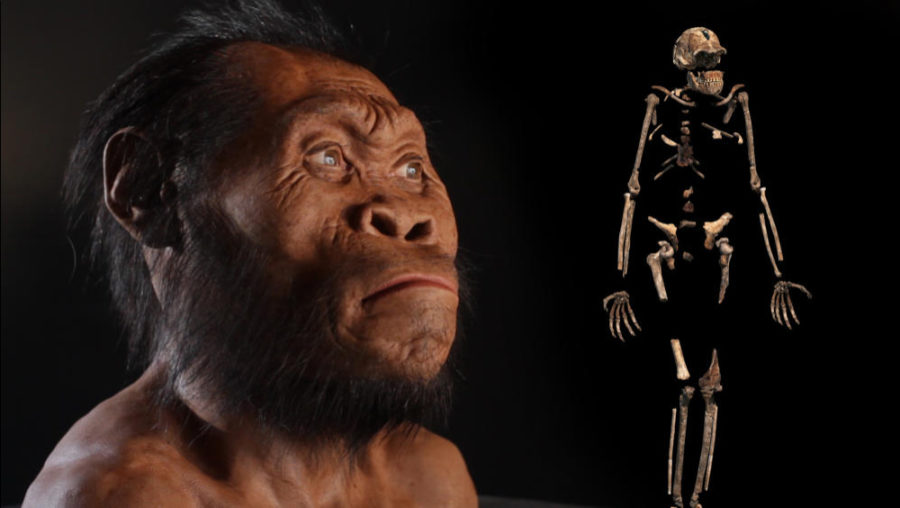
Homo Naledi was discovered in the Rising Star cave system in South Africa in 2013. In 2015 it was declared to be a new ancestor of modern humans, approximately 2-3 million years old. It’s brain was about the size of an orange; much smaller than modern humans.
The Associated Press reported that scientists have “discovered a new member of the human family tree”1. National Geographic magazine (featured image above) ran a story in October 2015 with the face of this creature in its cover. Now, 2 years later, after some solid analysis has been complete on the skeleton fossil the story has changed. Dating techniques say the fossils are around 300,000 years old2. This is only 1/10th as old as previously though. This age assumes one accepts that the dating technique used is valid. If not, it may be much younger yet. Maybe only a few thousand years old.
According to evolutionary theory, 300,000 years ago modern humans existed. Thus this creature could not be one of our ancestors.
So what is Homo Naledi? Scientists do not really know yet. More study is needed. It could be an extinct type of ape. It could turn out to be human but deformed from some disease. It could turn out to be something quite different. Only in time will scientists due further analysis and publish another report narrowing down what Homo Naledi really is. For now we do know it is not millions of years old but possibly only thousands, thus fitting into the Biblical timeline of the Earth being about 6,000 years old.
References:
- Chutel, L. and M. Ritter. Study: Bones in South African cave reveal new human relative. Associated Press. Posted on phys.org September 10, 2015, accessed September 10, 2015.
- Young Homo naledi surprises. Wits University News. Posted on wits.ac.za May 9, 2017, accessed May 15, 2017.
Featured image credit: http://news.nationalgeographic.com/2015/09/150910-human-evolution-change/


Recent Comments